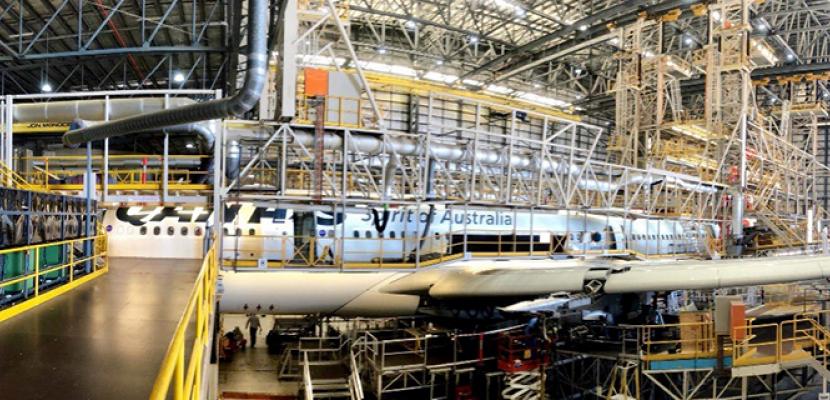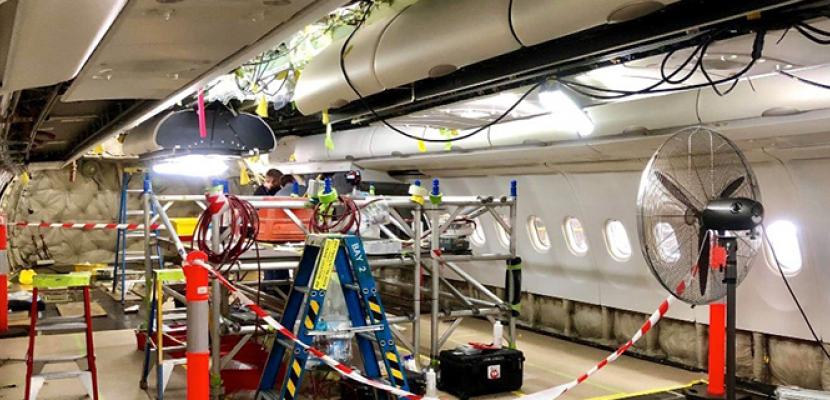
Written by Master of Project Management (Professional)(CRICOS 078182M)alumnus Nicholas Offroy.
Many critical service industries are restricted from public access, and aviation maintenance is no exception. Security and safety are paramount. But a group of Project Management students from Bond University went on a ‘behind the scenes’ tour of the QANTAS Hangar 3 facility at Brisbane Airport.
A group of 15 students took an inside look at the day-to-day operations of a vital piece of engineering infrastructure in the context of meeting client requirements for aviation maintenance.
The visit was guided by Jeff, a retired aeronautical engineer and project manager, who took us around Hangar 3. QANTAS employs 550 people in aircraft maintenance facilities at Brisbane Airport.

Students were impressed by the dimensions of the hangar - 160 x 80m (apparently you can fit 10.5 billion ping-pong balls inside). Each of the five hangar doors is 32 x 28m and weighs 46 tonnes. Traditionally, a hangar is seen as a shelter in which maintenance tasks are performed. However, a line maintenance operation for aircraft is more comparable to a Formula 1 pit stop than to a traditional workshop.
Line maintenance activities at Brisbane Airport include both scheduled and non-scheduled tasks on aircraft, and are time critical in nature since they affect aircraft availability to transport passengers. The objective is to reduce the ground time of an aircraft, which involves working across organisational functions such as engineering, planning, procurement, supply chain, equipment, human resources, IT, etc. and using project management tools and systems to deliver results.
Hangar 3 is designed to receive three aircraft simultaneously, and complete inspection checks and maintenance tasks on both Airbus and Boeing aircraft. Maintaining planes from two different manufacturers is more complex than it seems, requiring different engineering protocols, processes, tools and equipment.
QANTAS was the recipient of a Project of the Year award by the Australian Institute of Project Management (AIPM) for their Airbus A330 aircraft program. The project was conducted over a two-year period and was significant, as the A330 was the first Airbus aircraft type to be introduced to QANTAS. A complex range of product, infrastructure, systems and processes needed to be defined across multiple divisions, project teams and external stakeholders.

The QANTAS Hangar 3 does not just offer a sheltered working space but aims to create an efficient working environment best suited to perform the aircraft maintenance work at Brisbane Airport.
Bond students also had the chance to visit the inside of an A330-300 that was being fully reconfigured (new seats, toilets, overhead lockers, Wi-Fi, etc.) over a six-week schedule. The hangar allows performing what is called C-Checks, requiring a majority of the aircraft’s components to be inspected and certified.
The tour also gave greater clarity about various management concepts for PM students as they saw how these concepts are put into action, including an appreciation of the risky conditions in which technicians work and the human resource management challenges involved in meeting deadlines and reducing ground time.
Talking to Jeff and being able to learn from his experience provides an infinitely valuable insight that no text book or classroom presentation can offer. Also, it was absorbing to see how the tools and techniques we hear about in our lectures find application in the real world.
About the author
Nicholas Offroy is a recent graduate of the Master of Project Management (Professional) degree. He won the PMIQ Award for best graduate in his cohort, and was the President of the Bond’s Built Environment Student Association (BBESA) during his studies. Immediately upon graduation, Nicolas landed a full-time position with Turner & Townsend Thinc in Brisbane.